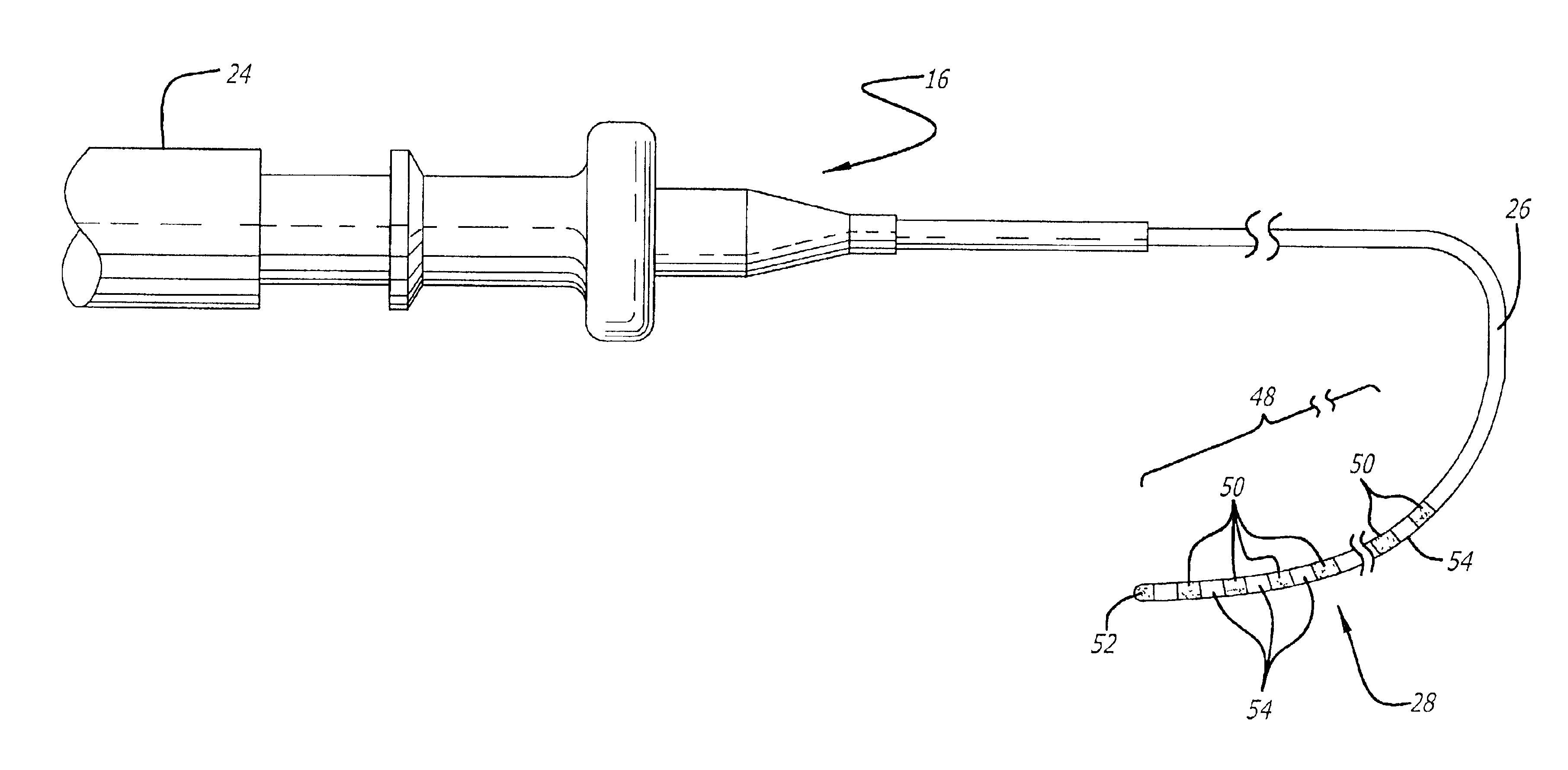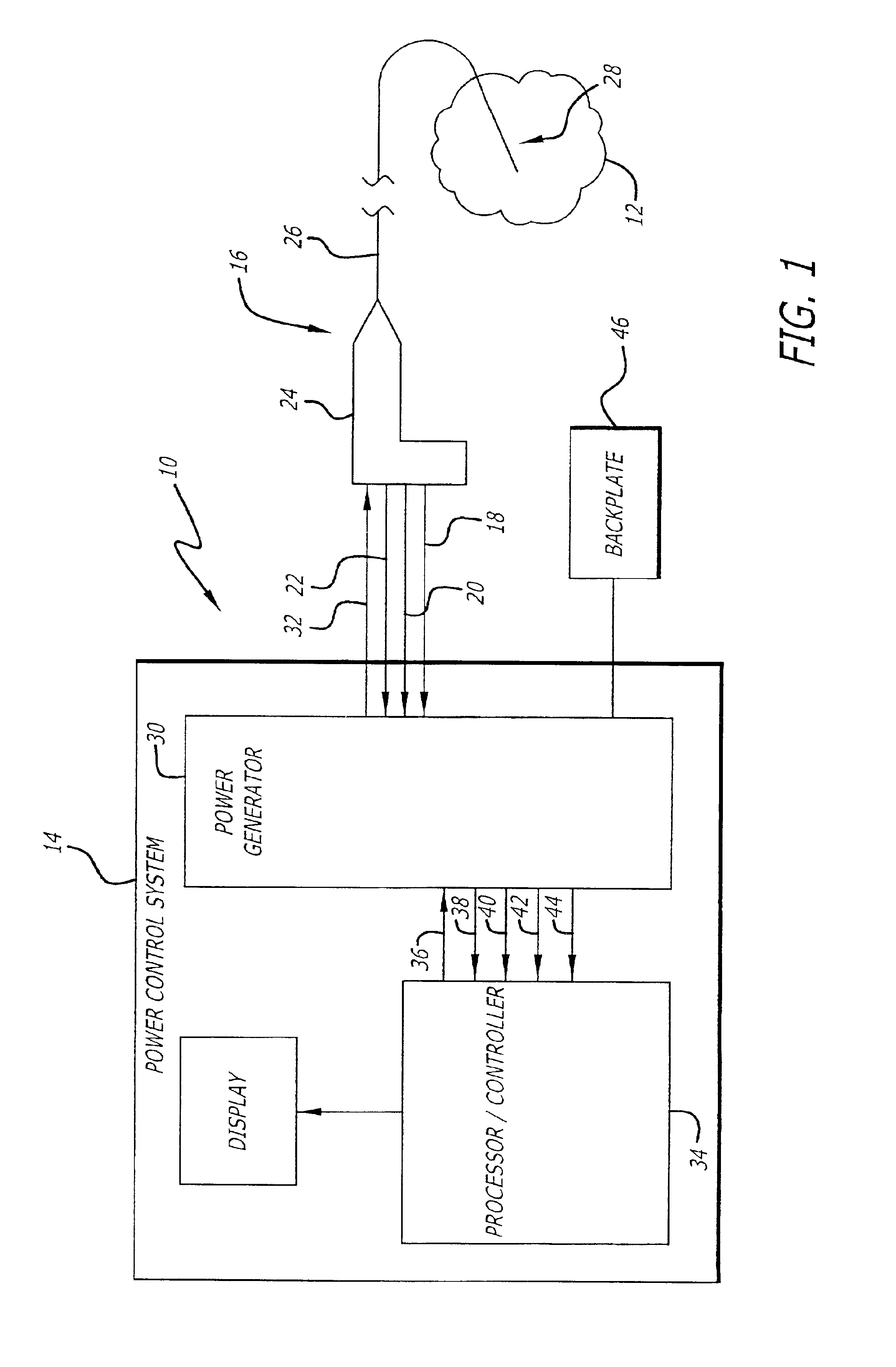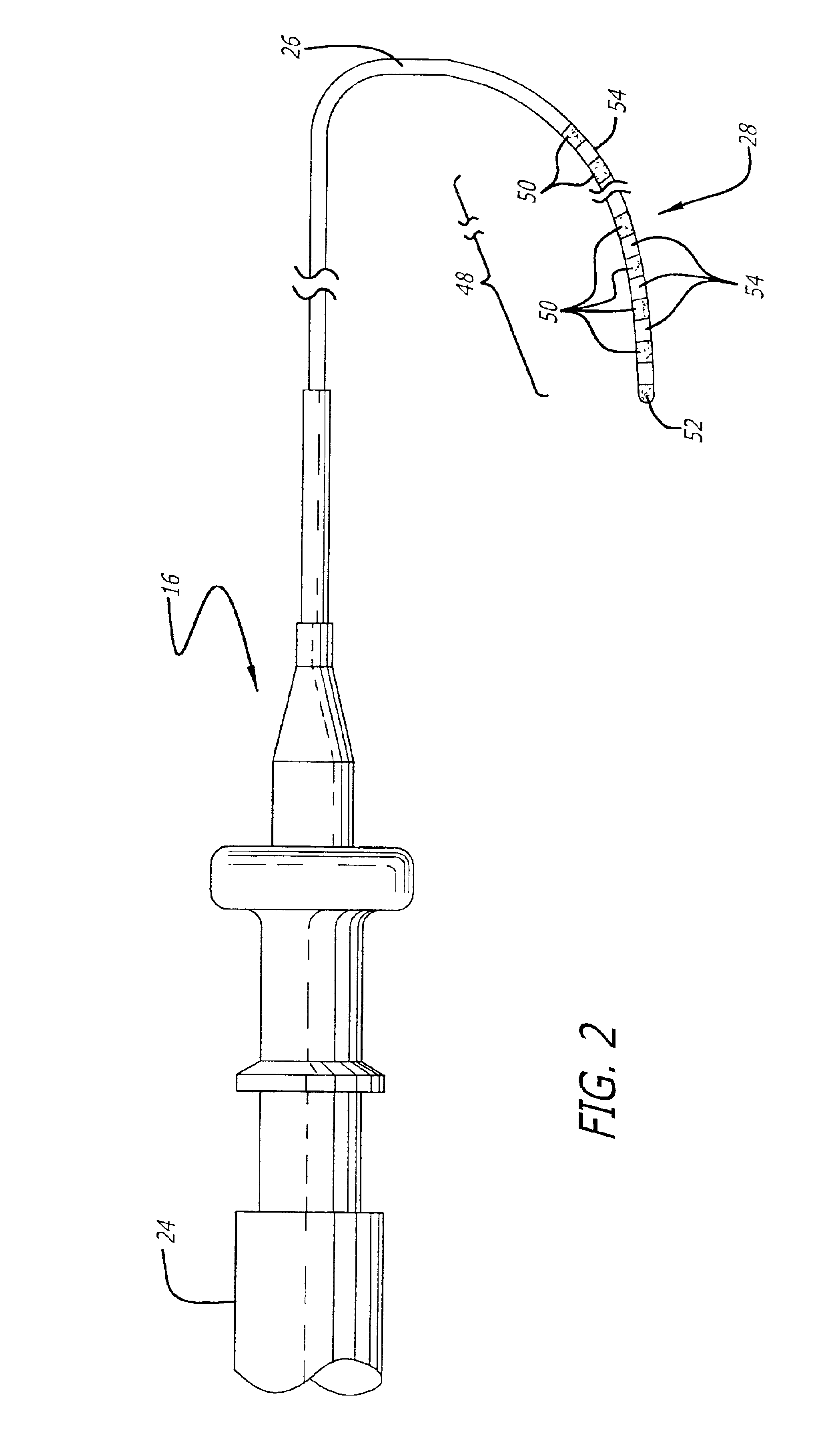Ablation catheter with transducer for providing one or more of pressure, temperature and fluid flow data for use in controlling ablation therapy
a technology of transducer and catheter, which is applied in the field of electrophysiological (“ ep”) catheter system, can solve the problems of affecting the normal rhythm of the heart, affecting the normal flow of blood flow,
- Summary
- Abstract
- Description
- Claims
- Application Information
AI Technical Summary
Problems solved by technology
Method used
Image
Examples
Embodiment Construction
[0045]Turning now to the drawings, in which like reference numerals are used to designate like or corresponding elements among the several figures, in FIG. 1 there is shown a system 10 for use in ablation therapy of a biological site 12, e. g., the atrium or ventricle of the heart. The system 10 includes a power control system 14, a catheter system 16 having means (not shown) for providing one or more of pressure data 18, flow-rate data 20 and temperature data 22 to the power control system 14. The catheter system 16 includes a handle 24 and a steerable catheter shaft 26 having a distal segment28. The distal segment 28 carries an electrode system (not shown) and is capable of being percutaneously introduced into a biological site 12. The pressure data 18 includes data indicative of the pressure being exerted on the distal segment 28 in the region of the electrode system while the flow-rate data 20 includes data indicative of the rate of fluid flow through the biological site 12, suc...
PUM
 Login to View More
Login to View More Abstract
Description
Claims
Application Information
 Login to View More
Login to View More - R&D
- Intellectual Property
- Life Sciences
- Materials
- Tech Scout
- Unparalleled Data Quality
- Higher Quality Content
- 60% Fewer Hallucinations
Browse by: Latest US Patents, China's latest patents, Technical Efficacy Thesaurus, Application Domain, Technology Topic, Popular Technical Reports.
© 2025 PatSnap. All rights reserved.Legal|Privacy policy|Modern Slavery Act Transparency Statement|Sitemap|About US| Contact US: help@patsnap.com



